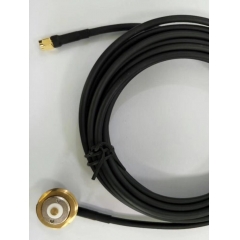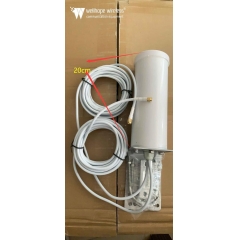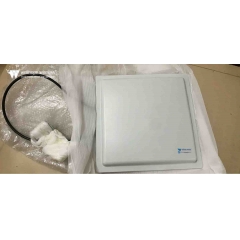Em relação a dB, dBm e dBi
Estimativa de 15 minutos para terminar a leitura
DB (decibéis)
DB é uma unidade relativa usada para representar a razão entre duas quantidades. Geralmente é usado para descrever a relação entre potência ou tensão (ou corrente).
Definição: (dB=10 \ log_ {10} \ left (\ frac {P_2} {P_1} \ right)) ou (dB=20 \ log_ {10} \ left (\ frac {V_2} {V_1} \ right) )
Entre eles, (P_1) e (P_2) são dois valores de potência, e (V_1) e (V_2) são dois valores de tensão ou corrente.
Nota: dB é uma unidade relativa que representa a razão entre duas quantidades, não um valor absoluto.
1. A fórmula de cálculo de decibéis para relação de potência:
Ao comparar dois valores de potência, a fórmula de cálculo de decibéis é:
DB=10log10 (P1P2), onde (P_1) é a potência de referência (geralmente um valor fixo) e (P_2) é a potência a ser medida. Se (P_1) for 1 watt, a fórmula acima pode ser simplificada como: dB=10log10 (P2), onde (P_2) é o valor da potência em watts.
2. A fórmula de cálculo de decibéis para relação de tensão (ou corrente):
Ao comparar dois valores de tensão (ou corrente), a fórmula de cálculo de decibéis é:
dB=20log10(V1V2)
talvez
dB=20log10(I1I2)
Dentre eles, (V_1) e (I_1) são tensões e correntes de referência (geralmente valores fixos), enquanto (V_2) e (I_2) são as tensões e correntes a serem medidas. Se (V_1) ou (I_1) for 1 volt ou 1 ampere, a fórmula acima pode ser simplificada como:
dB=20log10(V2)
talvez
dB=20log10(I2)
Here (V_2) and (I_2) are voltage and current values in volts or amperes.
Note: In these formulas, (\ log_ {10}) represents the logarithm based on 10. If (P_2/P_1) or (V_2/V_1) (or (I_2/I_1)) is greater than 1, then the decibel value is positive; If it is less than 1, the decibel value is negative. The larger the decibel value, the greater the multiple of (P_2) relative to (P_1) (or (V_2) relative to (V_1), or (I_2) relative to (I_1)).

DBm (decibels milliwatts)
DBm is an absolute unit used to represent power values, with a reference point of 1 milliwatt (0.001 watt).
Definition: (dBm=10 \ log_ {10} \ left (\ frac {P} {1mW} \ right))
Where (P) is the power value to be measured.
For example, if the power of a signal is 1 watt, then its power is (10 \ log_ {10} (1000)=30 dBm).
DBm is commonly used to describe the power of wireless signals or the sensitivity of receivers.
DBm calculation formula
dBm=10log10(1mWP)
Among them,
(P) is the power value to be measured, in milliwatts (mW).
(1mW) is the reference power value, which corresponds to the power of 0dBm.
Related information
1. Unit conversion:
0dBm corresponds to 1 milliwatt (1mW).
For every 3dBm increase, the power doubles; For every reduction of 3dBm, the power is halved.
For example, 30dBm corresponds to 1 watt (1W), because (10 \ log_ {10} (1000)=30) (because 1W=1000mW).
2. Common conversion values:
o 30dBm = 1W
o 40dBm = 10W
o 50dBm = 100W
3. Precautions:
DBm represents the absolute value of power, not the power ratio.
In the calculation, pay attention to the unit of power and ensure that it is consistent with the unit of reference power (1mW).
Example
If the power of a signal is 4 watts (4W), then its power (in dBm) can be calculated as follows:
dBm=10log10(1mW4000mW)=10log10(4000)=10*(3+log10(4))≈36.02dBm
(Here (\ log_ {10} (4) \ approx 0.602) is the base 10 logarithm of 4)
DBi (decibels relative to isotropy)
DBi is a unit used to describe antenna gain, with its reference point being an idealized isotropic antenna (i.e. an antenna that uniformly radiates or receives in all directions).
Definition: (dBi=10 \ log_ {10} \ left (\ frac {G} {G_ {iso}} \ right))
Among them, (G) is the gain of the antenna to be measured, and (G_ {iso}) is the gain of an isotropic antenna (theoretically 1).
Note that since isotropic antennas do not exist in reality, dBi is a relative unit, but it provides a convenient reference point to compare the gains of different antennas.
DBi is commonly used to describe the gain of antennas used in wireless communication.
DBi calculation formula
dBi=10log10(E0E)
Among them:
(E) is the effective radiation power or gain of the actual antenna.
(E0) is the effective radiation power or gain of an ideal isotropic antenna. An ideal omnidirectional antenna has uniform radiation in all directions, and there is no such antenna in practice, so it serves as a reference benchmark.
Related information
1. Benchmark de referência: O benchmark de referência para dBi é uma antena omnidirecional, que é um modelo teoricamente ideal usado para comparar o ganho de outras antenas.
2. Relação com dBd: dBi e dBd são unidades que descrevem o ganho da antena, mas seus padrões de referência são diferentes. O benchmark de referência para dBi é a antena omnidirecional, enquanto o benchmark de referência para dBd é a antena dipolo
(Antena dipolo). Geralmente acredita-se que ao representar o mesmo ganho, o valor representado por dBi é 2,15 maior que o valor representado por dBd (ou seja, dBi=dBd+2,15).
3. Exemplo: Se o ganho de uma antena é representado como 16dBd em dBd, então seu ganho é representado como 18,15dBi em dBi (geralmente ignorando as casas decimais, é 18dBi).
Em resumo, dBi é uma unidade usada para descrever o ganho da antena, e sua fórmula de cálculo é baseada na razão entre a potência de radiação efetiva da antena real e a potência de radiação efetiva da antena omnidirecional ideal . Comparado ao dBd, a referência do dBi é a antena omnidirecional, portanto, ao representar o mesmo ganho, o valor do dBi será 2,15 maior que o valor do dBd.


















 Antena MIMO
Antena MIMO
















